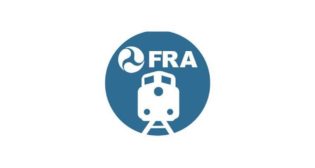
Ratifications make rail strike unlikely
Written by Nebraska Digital, administratorThe probability of a national railroad strike has likely been reduced to single digits with ratification of a new national wage, benefits and work rules agreement by four rail unions comprising more than half of unionized rail workers.
The ratified agreements will now be considered by railroads as patterns to be accepted by the unions that have yet to reach and/or ratify a tentative agreement. Those unions remain at the bargaining table with the National Railway Labor Conference, which represents U.S. Class I railroads and many regionals and short lines. Class I carriers include BNSF, CSX, Kansas City Southern, Norfolk Southern and Union Pacific.
Under the Railway Labor Act, contracts never expire, but continue in force until periodically amended. The National Mediation Board (NMB) controls the process, providing skilled mediators who work to focus the parties on common interests and constructive dialogue.
The Railway Labor Act prohibits strikes or lockouts until the NMB releases the parties. Even then, there is a lengthy process leading to non-binding recommendations by a Presidential Emergency Board (PEB), followed by additional talks before a strike or lockout may occur.
This round of national bargaining over wages, benefits and work rules began almost three years ago. Railroads have been negotiating as a single coalition, while the 12 labor unions voluntarily separated into three separate coalitions.
The largest union coalition, which reached the tentative agreement in October, includes the American Train Dispatchers Association; Brotherhood of Locomotive Engineers and Trainmen; Brotherhood of Railroad Signalmen; International Brotherhood of Boilermakers, Iron Ship Builders, Forgers and Helpers; and Sheet Metal, Air, Rail and Transportation Workers (SMART) Transportation Division (including yardmasters).
Four of those six unions, representing conductors, dispatchers, engineers and signalmen, ratified. The boilermakers rejected the tentative agreement, while the firemen and oilers haven’t completed the ratification vote.
Two other coalitions remain at the bargaining table. One, comprising 22% of unionized rail workers, includes the International Association of Machinists and Aerospace Workers; International Brotherhood of Electrical Workers; Transportation Communications International Union; and Brotherhood Railway Carmen. The third coalition, comprising 20% of unionized rail workers, includes the Brotherhood of Maintenance of Way Employes and the shopcraft side of SMART.
Provisions of the ratified agreement are retroactive to January 2015, and its terms are not subject to renegotiation before January 2020.
There now will be pressure on remaining unions to accept the pattern set. In fact, the NMB can keep those unions at the bargaining table indefinitely – especially if the NMB determines they are not engaged in good-faith bargaining.
If one or more do not reach a tentative agreement that is ratified by its members, the NMB eventually will release them from bargaining, which begins a series of three 30-day cooling-off periods punctuated by appointment of a PEB that will make non-binding settlement recommendations. Should those recommendations—typically mindful of the pattern already set—be rejected, a strike could then occur.
There has not been a national railroad strike since 1991. Historically, Congress steps in within hours with legislation ending a national railroad work stoppage, imposing a third-party settlement most often mirroring PEB recommendations. Railway Labor Act procedures would delay such an unlikely outcome at least until spring. Congress can and has imposed less generous terms on overly truculent unions, and there is practical reason to assume that this current conservative congressional majority would not look kindly on a holdout after most other unions have settled.
In fact, the ratified agreements reflect realization among workers of an economic environment characterized by wage stagnation and increasing healthcare cost burdens on most American workers, and a rail industry coping with a significant reduction in its bedrock coal traffic. Viewing the tentative agreement as equitable in this environment, BLET and SMART-TD members ratified it by overwhelming margins – 80% for SMART-TD and near 90% among BLET members.
The ratified contract, which is still on the table for the unions that have yet to settle, puts at least $33,000 more into the pockets of the highest paid rail workers within just two years and more than $16,000 by mid-2019 to those in the lower wage rungs. And there is not a single work rules change.
Although healthcare co-pays, deductibles and out-of-pocket maximums rise—but more slowly than medical cost inflation, and barely for those in good health—employee monthly insurance premiums are capped at the current level until at least mid-2020. By contract, other private sector and federal workers pay significantly more. In fact, railroads will be paying some 90% of all employee healthcare costs.
Both labor and carrier negotiators were complimentary of the guidance provided the Coordinated Bargaining Coalition by NMB mediator Eva Durham, and in the latter stages by NMB member Linda Puchala, who was a NMB mediator for many years prior to her 2009 elevation as a Senate-confirmed NMB seat.



